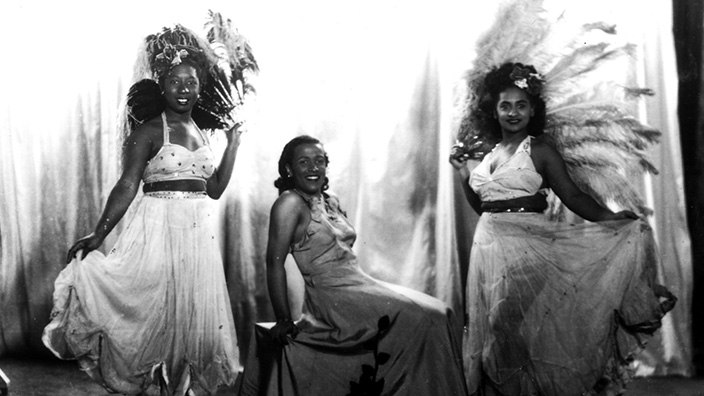Why the romance of journalism endures even as many opportunities for full-time work disappear

[su_dropcap style=”simple” size=”10″]W[/su_dropcap]hen Maggie Rahr was 24, she left the offices of CBC in Halifax, headed for the nearest alleyway, and sought respite behind a dumpster. Shaking and weeping, she smoked a cigarette. Rahr had just been laid off.
“My entire identity was crumbling around me,” she says, recounting this moment more than a decade later. At 36, the memory is still tender.
Rahr was a temporary (sometimes known as casual) employee, a non-permanent staff member who is hired with a predetermined or ambiguous end date. Temporary employees do not have health benefits or vacation days and are not eligible for severance pay. (At CBC, some benefits may kick in if the employee works at least four days or 29 hours per week for more than 13 consecutive weeks. However, internal logistics often prevent temporary employees from working in the same position for that long.) Leading up to Rahr’s departure, she was filing two news stories a day, even though reporters were only expected to write one. She desperately wanted to prove herself.
On the day Rahr wept behind a dumpster, her boss let her know she was not among the “top five” casual employees in the newsroom. There would be no more work for her. She went home and cried some more. Her roommate offered comfort, but was confused. “It’s just a job,” he told her.
“That was an informative moment,” Rahr remembers now. Her roommate could not understand her devastation—it was just a job. Rahr was young, resourceful, and ambitious. Within a month, she was hired as a reporter at News 95.7, a radio station in Halifax. Still, she says, leaving CBC was the worst heartbreak of her 20s.
Rahr knew journalism was a perilous career, but felt it was worth the risk. The thrill of picking up the phone and fearlessly calling anyone she needed to, gaining access to information unreleased to the public, and having sources trust her made being a journalist feel like a noble vocation. It was her passion, her purpose. “Once you realize you can do work that may help the public,” she says, “it’s like a calling.”
[su_dropcap style=”simple” size=”10″]D[/su_dropcap]r. Anthony Feinstein compares the motivation to be a journalist to the impetus of peacekeepers who calm tensions amidst violent uprisings in hazardous conflict zones. Feinstein is a psychologist and associate scientist at Sunnybrook Hospital in Toronto, where he has been studying the psychological effect of reporting on extreme violence and war for two decades. In the last few years, his work has shifted to domestic journalism. Similar to peacekeepers, he says, journalists are driven by altruism, which encourages them to tolerate difficult conditions such as high pressure, poor salary, job insecurity and uncertainty, because they see it as part of their duty.
Feinstein says this allegiance is a powerful stimulus, and provides a plausible explanation for the “phenomenon” of becoming a journalist, despite the industry’s well-known challenges. “People do it because they believe in it,” he says. “There is a sense of contributing to the public good, keeping people informed, and boosting civil society, all while giving yourself a creative outlet.”
Feinstein’s research explains why Rahr, and many other journalists, endure precarious and stressful work conditions. Less than two years after Rahr was let go from CBC, she returned again as a temporary employee, a role she held on-and-off for nearly a decade. Once a temporary employee works continuously for 18 months in the same position, they become permanent. During this period, Rahr was cut from the news desk one day short of obtaining full-time employee status.
It’s not easy to tell who “the casuals” are in any newsroom. In Rahr’s case, at various points in her career, she was working Monday–Friday, from 9 a.m.–6 p.m. She wore a variety of hats, working on radio dramas, as a reporter, and as a radio technician over a three-month backfill stint. Like many casuals, she went where she was told, just hoping to stay in the mix.
Casual employees are common not just at CBC, but across Canadian newsrooms. The National Observer hires contract positions for special projects, spanning from one-month to year-long arrangements. At BuzzFeed, during the last American presidential election, management hired a disinformation reporter, also on contract, in its Toronto office.
Canadaland hires contract associate producers to work on its weekly Short Cuts podcast. The Globe and Mail hires recent graduates and students as reporters and content editors for three-month contracts each summer. Post-secondary students monitor the Toronto Star’s breaking news desk for eight-month contract stints.
In 1998, about 15 percent of journalists employed in news organizations held temporary roles. (This includes freelancers, contractors, casuals, project-based journalists, and interns.) In 2017, this number increased substantially, rising to about one-quarter of the entire journalism workforce in Canada.
The Canadian Media Guild (CMG), a union that represents CBC, TVO, Vice, and the Canadian Press, among others, has 5,000 members across the country. Of those members, 1,281 are temporary workers, says CMG’s communications director Jeanne d’Arc Umurungi. In other words, 25 percent of CMG members are working in a casual capacity.
“The jobs that do exist are changing,” says Sabrina Wilkinson, a Canadian digital policy researcher based in Paris. “They’re becoming more precarious and less secure.” A 2019 analysis conducted by Wilkinson called “Crisis or Transformation? Debates Over Journalistic Work in Canada,” revealed that new jobs were not always being factored into the tally of journalists in the country. This discrepancy has contributed to a misleading image of a “rapid free-fall in employment rate,” she says. Media jobs have evolved alongside the growth of the Internet, which has led to the creation of more temporary positions. But she says the labour statistics we have do not accurately reflect this proliferation. In essence, the total number of journalists in Canada has been significantly low-balled.
Wilkinson’s research compared the number of permanent versus temporarily employed journalists in Canada. Her findings were staggering: only 60–70 percent of journalists in the country were permanently employed, according to analysis of the most recent Statistics Canada data she completed with Dwayne Winseck, a communications and journalism professor at Carleton University.
However, while permanent jobs have been declining, temporary work has been on the rise. Wilkinson and Winseck found that there are slightly more journalism jobs now than there were 30 years ago. But the majority of these jobs are not permanent positions. This temporality has led to immense precarity, job insecurity, and financial instability.
[su_dropcap style=”simple” size=”10″]S[/su_dropcap]ome days, as Rahr works in the corner of her neighbourhood pub, listening to The New York Times’ podcast The Daily, she imagines what it would be like to have the financial security and organizational support that full-time journalists at The Times do. These days she’s a freelancer, pursuing investigative stories, such as the mishandling of a Halifax woman’s sexual assault case, which she covered for CBC. Last year, Rahr published an investigation in the Halifax Examiner, which revealed that a local woman had been sexually assaulted twice by the same police officer. She also wrote and hosted What Happened to Holly Bartlett, a true crime podcast. In addition, she is a grant writer for an organization that supports at-risk youth. There is liberty in choosing her own projects, she says, but the constant hustle makes her life unpredictable.
[su_quote]The thrill of picking up the phone and fearlessly calling anyone she needed to, gaining access to information unreleased to the public, and having sources trust her made being a journalist feel like a noble vocation[/su_quote]
The narrative of declining newspapers has allowed organizations to hire more temporary employees and freelancers without dispute. These workers are treated as disposable, often paid hourly, and do not have benefits, which makes them significantly cheaper to maintain than full-time staff. And yet, because of this narrative, casual employees are made to feel grateful for low-wage opportunities and interim contracts. But according to Marc Edge, a communications professor at the University of Malta and a former editor-reporter for the Vancouver Province and Calgary Herald, this framing, from a business standpoint, has been manipulated.
In his 2014 book, Greatly Exaggerated: The Myth of the Death of Newspapers, Edge wrote that all North American newspapers remained profitable from 2006–2013. Even during the 2008 recession, he says, most maintained double-digit profit margins.
Edge says that Postmedia especially leans into the portrayal of a publishing company in distress. To cut costs in 2017, the company merged its daily papers in Calgary, Edmonton, Ottawa, and Vancouver. It ceased printing another nine newspapers in 2018. Between 2016 and 2018, Postmedia reduced their overall staffing by 30 percent.
Reducing business had a lucrative result. Postmedia’s annual profit margins in 2019 were “well above” the historical Fortune 500 average, says Edge.
In short, over the past decade, journalists have been extensively let go by Postmedia and many other North American publications, in an effort to remain cash positive. By exaggerating financial decline and inflating publication closures, the news industry has been depicted as in crisis, Edge wrote. He calls this the “death myth.” By closing newsrooms and firing staff, media conglomerates sustain what Edge calls a “Darwinian capitalist” business model.
The outcome is an infinite pool of non-permanent journalists, explains a CMG representative. But most contracted journalists in Canada work for major news organizations that are making money, not startups or activist magazines that can’t afford to pay a decent wage, says Nicole Cohen, an associate professor at the University of Toronto’s Institute of Communications, Culture, Information and Technology.
For her study “At Work in the Digital Newsroom,” Cohen interviewed journalists in Canada and the United States to learn about the conditions of their labour. Many of her subjects justified their decision to remain in pressurized work environments that require constant personal sacrifice because they felt a sense of loyalty or commitment. Cohen describes this as a “general romanticization.”
In one interview, the subject told her, “Everybody here works weird hours and you’re not doing it for the pay or for the glory.” When breaking news hit, this source said they wanted to contribute, even if that meant staying at the office until 2 a.m. “You are doing it because you believe in the idea of journalism.” For them, it was a “badge of honour.” In another interview, the subject recognized that they could only sustain the “full-throttle-burnout” they were experiencing because they were young. “I don’t know if I’ll ever have a family or kids if I’m at the office until 10 or 11 every night,” they said.
[su_dropcap style=”simple” size=”10″]T[/su_dropcap]his romanticization was the bait that kept Nasr Ahmed swimming in CBC’s casual pool for six years. “Working at CBC, or any other journalism job for that matter, isn’t just a job. It’s a romantic attachment,” says Ahmed, a former casual employee at CBC Sports. “It’s a dream animated in real life and there is nothing you wouldn’t jeopardize to hold on and secure that as a temporary worker.”
Ahmed’s managers promised him that a full-time job was just around the corner. They made no real commitment, but the possibility kept him hanging on. To supplement his CBC income, he took a part-time job directing technical footage for the Brampton Beast hockey club. “It’s like a potential partner who might not text you back,” he says, adding that periods of his unemployment could last a couple months. “I really felt like I was on call for six years.”
Ahead of the PyeongChang Olympics in 2018, Ahmed worked for about eight months in CBC’s features unit. He never signed a contract, though loose implications were made, suggesting eventual stable employment. During the Olympics, he worked 16-hour overnight shifts at CBC Sports. A week later came the Paralympic Games. Many employees took time off because they were burnt out. But Ahmed wanted more work. “When you did grow up quite poor,” Ahmed says, “you don’t have the luxury of saying no.”
“We are the ones who burn out most of the time,” he continues. “People who don’t have a lot of money, people of colour, people who are not really well connected.” In job postings, CBC states a commitment to diversifying its newsrooms, noting that, “We can only create and tell stories that connect Canadians by having a workforce that mirrors the ever-changing makeup of our country.” But, Ahmed asks, “Is it really diverse if [employees] are all from the same socioeconomic backgrounds? Without a diversification of class, there isn’t really diversity in newsrooms.” Those who have a financial safety net are the ones who can afford the ambiguity and uncertainty of casual work.
CBC internships are unpaid, and only open to candidates enrolled in university or college. In return for six weeks of full-time work, students receive an academic credit. As Ahmed put it, a CBC internship is an unofficial training program for becoming a casual employee. If you make an impression as an intern, producers will often call you in when they are understaffed. Without an internship, it’s difficult to make connections.
At 19, Ahmed was an intern at Hockey Night in Canada, then owned by CBC. When he was young, he believed in meritocracy. Now, he calls meritocracy a myth. “No matter how much effort you put in or the quality of your content, you will not likely be made permanent,” he says. If you don’t come from a privileged background, Ahmed explains, you have to get lucky.
[su_quote]“It’s like a potential partner who might not text you back,” [Nasr Ahmed] says, adding that periods of his unemployment could last a couple months[/su_quote]
In Cohen’s study on digital newsrooms, many of her interviewees worried that precarious working conditions in journalism prevented people of diverse gender, class, and racialized backgrounds from entering the field.
“We miss a lot of racialized minorities, people whose first language isn’t English, but who are deeply knowledgeable about a community,” says Vicky Mochama, co-founder of Vocal Fry Studios and an editor at The Conversation. “We miss people who are not necessarily middle class. We miss out on people with disabilities. All of those people get missed when you are requiring barriers to entry.” Those who pursue unpaid internships and find a way into the building, like Ahmed, can end up feeling additional pressure to work extra shifts and ignore the symptoms of burnout.
Still, status and financial security are not always synonymous. Even highly respected, frequently published journalists with loyal followings do not necessarily have economic stability. “You’re not paid for all the time it takes to do research, interview people, edit, pitch stories, think of stories, find ideas, make contacts, invoice, and chase publications to be paid,” says Cohen. This makes it incredibly challenging to earn a decent living, even if appearances suggest you’re doing great.
When Tatum Dooley, a freelance writer in Toronto, was beginning her career, she aimed to accumulate “fancy bylines” in acclaimed publications. Those esteemed, reputable media companies tended to mistreat her, she says, often making her wait many months for payment. “It’s such a fleeting satisfaction,” she says of seeing her byline in publications that, while optically prestigious, quietly push freelancers into poverty. Now, Dooley prefers to cultivate relationships with smaller arts magazines that pay her within a week of publication. “I feel so much better in my work and life,” she says.
Toronto-based columnist and radio show host Desmond Cole, too, embodies this paradox of reputation versus reality. He has over 85,000 Twitter followers, hosted a popular Sunday afternoon radio show on Newstalk1010, is regularly invited to speak on panels and, as of this year, is the bestselling author of The Skin We’re In: A Year of Black Resistance and Power.
But at a Ryerson Review of Journalism conference last November, Cole candidly told the audience about his own financial challenges. “I am not an example of a success story,” he said.
Cole’s 2015 Toronto Life cover story, “The Skin I’m In,” about his experience as a Black man arbitrarily profiled and carded by police, is often assigned in Canadian journalism classes. This outward-facing reputation did not match his lived reality. “I have been struggling over the past four and a half years,” Cole admitted. “While people in j-school have been talking about me, I have been asking friends for money to pay rent.”
“We have to build something much more sustainable,” Cole told the audience. He was referring to the necessity of collective action, a shift that would require moving away from a focus on one’s personal brand and individual success.
[su_dropcap style=”simple” size=”10″]I[/su_dropcap]n the final year of Ahmed’s casual era at CBC, he started attending CMG meetings. He eagerly wanted to organize his colleagues. A union employee noticed Ahmed’s efforts to improve temporary employment standards, and asked him to apply for a job. In 2018, he became a full-time associate member of the Communications Workers of America (CWA) media union, the CMG’s umbrella organization. He is dedicated to educating media students, part-time and temporary employees, and interns on their rights in the workplace.
Around the early 2000s, when journalism began its pivot to digital, start-up-style newsrooms were born. From the outside, these seemed like refreshing establishments full of hip, young people, an antidote to legacy media. But a “sophisticated mixture of paternalism and repression” brewed beneath the surface, as Cohen and Greig de Peuter wrote in a chapter they contributed to Stephanie Ross and Larry Savage’s book, Labour Under Attack: Anti-unionism in Canada.
In 1994, Vice began as a small operation, which published a 16-page monthly magazine in Montreal. By 1999, it had grown to incorporate a news site, with its headquarters relocated to New York. In 2014, Rogers Media Inc. invested $100 million in Vice Canada, in order to launch a 24-hour TV channel called Viceland. Before this partnership, Vice’s Toronto newsroom had roughly 25 employees. Just before the infusion of Rogers’ investment, Tannara Yelland was hired as a paid intern. Soon, she became a full-time writer, covering politics and labour.
Within five months, Vice Canada’s staff grew to more than 100 people. By 2016, 200 employees worked in the Toronto office. What started off as a dissenting DIY magazine in Montreal was rapidly assimilating into the corporate, capitalist world it so convincingly claimed to detest. Vice moved from Dufferin Street in Parkdale to a 25,000 square foot open-concept office in Liberty Village that had a sparkling water tap, a bar, and a movie theatre. Furniture was sourced from the likes of DesignAgency and Herman Miller. (One distressed leather couch from Restoration Hardware, featured in a Toronto Life article about Vice’s office, retails online for $5,695.) The office aesthetic and amenities were a boastful component in showing off Vice’s newfound wealth. Staff salaries, however, were not included in these illusions of prosperity.
According to Yelland, she was paid $30,000 a year, a common salary by Vice standards. “It was pretty bare bones,” she says, referring to her contract. In 2015, a standard employee contract did include moderate health benefits applied after three months, and two weeks vacation time, but no eligibility for overtime pay.
“I was basically happy to be offered a job,” she says. “That is something that a lot of employers, including Vice, know about young workers and take advantage of.” The Canadian poverty line ranges from $16,436–$20,389 for individuals, according to the most recent Statistics Canada data, published in 2017. After tax, and once unpaid overtime hours were factored in, Yelland was not making much above that. But she didn’t want to jeopardize her employment by asking for more. Vice was not just any office. It was an alternative place where young people could indulge in adventurous, creative, personalized endeavours that would never fly at more professional publications. Management knew that.
“There is a culture cachet that was supposed to stand in for better pay,” says Yelland. Just like Rahr, she was young, ambitious, and eager to remain at a company where she could do work she believed to be important.
As Vice’s Toronto staff was expanding, employees began noticing discrepancies between teams. Working conditions were often based on individual relationships with managers. Some would pay overtime and allow their employees to come in later on mornings after long video shoots. Others wouldn’t. The workplace culture was chaotic and lacked a clear set of policies.
When Yelland was hired, there was no human resources department. Employees were asked to sign a non-traditional workplace agreement, which said they should expect to experience “unique and unusual situations, which may be considered offensive, indecent or unacceptable by others.” The agreement listed “sexually provocative and explicit images” as examples of this. Vice’s supposed punk roots were used to justify its intentionally edgy contractual obligations, which allowed potentially inappropriate office behaviour to pass as cool or merely unconventional. Employees were additionally asked to sign a separate non-disclosure agreement, which ensured “non-traditional” behaviour was kept confidential.
In August 2015, Vice’s head office in New York went public with a union drive. Gawker Media, HuffPost, Salon, and the Guardian U.S. were also taking action toward forming unions. Yelland and some colleagues took notice. One night after work, she and about 10 others met at a bar and decided to do something, too.
Quiet solidarity spread around the newsroom. The small group eventually partnered with CMG. For six months, they asked coworkers to go for coffee off-site, and proposed the idea of signing union cards—the first step in gauging whether staff was interested in unionizing. One of the challenges at Vice was counting enough full-time employees. Just like at CBC, many were on non-permanent contracts and therefore, not permitted to vote.
“I thought it was just me,” says Maggie McCaw, one of the staff members hired during Vice’s 2015 influx. “It turned out everyone thought it was just them…Once you started talking to people about things like pay and benefits and vacation time, you realized that many of us had similar frustrations.” In April 2016, the cards were counted and sent to the federal labour board. The majority of staff wanted to unionize.
Before the union vote, Ryan Archibald, Vice’s then managing director, sent out a staff email: “It is our view that we have a great workplace, and we offer competitive benefits, such that you don’t need a union.” Archibald also held a town hall meeting to convince staff that a union was simply an “expensive benefits provider.” At Vice, the employers and employees had a “common identity,” Archibald told them. These kinds of emails and meetings represent subtle “anti-union rhetoric,” according to Cohen and de Peuter.
In May 2016, 69 percent of Vice employees voted to unionize. Shortly before that, Yelland was fired. “It is not clear why,” she says. “That is still a bit of a question mark.” The timing raised suspicion, but her involvement in unionizing was not officially cited as a reason for her departure. (Britt Aharoni, Vice Canada’s manager of communications, declined to comment on Yelland’s firing, citing the company’s confidentiality policy.)
After a year of meeting with Vice management, a collective bargaining agreement was ratified in May 2017. A pay grid was created, which established a baseline salary for every employee in the office. All staff received a raise of at least two percent. The average wage increase was nine percent. Interns would receive $15 an hour. One employee received a 52 percent pay raise.
[su_dropcap style=”simple” size=”10″]T[/su_dropcap]hese victories considered, unions cannot solve all workplace problems. CBC is part of the CMG. And yet, Rahr remained a casual employee for close to a decade. Organizing is a starting point, Ahmed explains. And the union is only as strong as the workers’ commitment.
“If you are constantly worried about losing your job…that makes going to work really awful, in an environment that is really stressful,” McCaw says. She believes this anxiety is at the root of the precarity in journalism, particularly for young workers.
[su_quote cite=”Desmond Cole”]”While people in j-school have been talking about me, I have been asking friends for money to pay rent” [/su_quote]
Shortly after Manjula Martin became a full-time freelance journalist in 2012, she pitched a book review to a small online journal. When it was accepted, she was informed that the publication did not have any money to pay her. “I quickly realized there was no transparency about pay or working conditions for journalists,” she says. Martin decided to make a Tumblr page exposing the rates of various publications. Other freelancers began anonymously submitting their own wages. To expand the reach, Martin launched a standalone blog called Who Pays Writers? As of today, the blog lists over 1,000 publications and their range of rates. “The economics of journalism get tougher and tougher for writers,” Martin says. “There is a hunger for this type of transparency.”
Cohen calls this “counter-publicity,” a bottom-up approach that unites workers through collective anger and inspires transparency. Historically, employees have been urged to keep their salaries private, which has resulted in untold wage disparity. “It only helps the bosses,” says Cohen. Initiatives like Who Pays Writers? led many journalists to realize that everyone was being paid terribly, she says—even by respected publications.
The Globe’s page on Who Pays Writers? lists a spectrum of rates: 27 cents per word for 650 words, 40 cents per word for 750 words, and 50 cents per word for a 500 word opinion column. On the The Walrus’ page, one writer reported being paid 42 cents per word for a 1,200-word feature, while another was paid $1 per word for a 5,000-word feature. Flare’s rates ranged from 29 cents to 80 cents per word. Cohen says these kinds of varied payments are arbitrary, and often allocated according to gender and race. Rates can also differ depending on whether the story runs online or in print.
After working as a full-time audio producer at Canadaland, Katie Jensen’s 2016 net income was $27,000. She decided to post how much she made on Twitter, with the hashtag #incometransparency. “Like many young, vulnerable Canadian journalists, I worked unpaid overtime and often pulled 60 hour weeks,” she wrote. (The living wage for Toronto is $22.08 an hour. If Jensen’s unpaid overtime hours were factored in, she was making around $11 an hour.) The Canadaland gig started off as an unpaid internship that spanned a few months, and turned into her first media job after finishing journalism school. Now, Jensen is the co-founder of Vocal Fry Studios with Mochama.
As the managing editor of BeatRoute, a Western Canadian media brand that publishes a monthly magazine, Melissa Vincent is responsible for assigning stories. Before the publication’s recent expansion to Toronto, its writers out west were paid five cents per word. Vincent deemed this unacceptable. “I told [management] that I would not give them access to my list of writers if I couldn’t pay them what I thought was a fair wage,” she says. Now, BeatRoute pays $300 for a cover story and $150 for an interview feature—still modest in the landscape of digital publishing, but an improvement.
Prior to joining BeatRoute, Vincent was the editor-in-chief of A.Side, a music website in partnership with Universal Music Canada. She was given a monthly budget, with the individual wages of writers at her discretion. In order to make budgetary decisions, she had to calculate a cost-benefit analysis. If a writer received 50,000 clicks on their last article, there was justification for paying them more. In some cases, she would approach her own boss to leverage a writer’s analytics as rationale for a higher rate. “The ugly reality is that the financial side of things really plays a significant factor,” she says. “You are writing for a place that ultimately needs to make money.”
[su_dropcap style=”simple” size=”10″]M[/su_dropcap]uch like romance, freelancing requires compromise. Some pieces may not be compatible with the pursuit of prestige but help pay the rent. Others may be creatively fulfilling, but generate less money. Nick Hune-Brown is familiar with this dance. For nearly a decade after he graduated from McGill University, he earned 100 percent of his income as a freelance journalist. In 2017, the founders of Toronto-based publication The Local approached him based on his strong reputation in the Canadian magazine industry. At the time, The Local was a storytelling platform that explored health data, funded by the Ontario government’s Local Health Integration Network. Hune-Brown joined the team and helped turn the project into an independent online magazine. Now, he is the senior editor, and splits his time between The Local and freelancing. Receiving a consistent income every month, regardless of how many words he writes, is a welcome change for him. With a young child to support, the timing of the arrangement made sense.
Since becoming an editor, Hune-Brown has had to adjust his mentality from, “Why can’t they pay me more?” to “This is how much we can offer.” When writers ask for a higher rate, he is empathetic. “I feel like [experienced writers] should be getting $1.20 per word,” he says. But he simply does not have the budget. Hune-Brown may not be able to pay writers what he thinks they deserve, but The Local does pay on time—that’s a priority, he says. Cheques are sent within the same week as invoices are submitted.
In a sense, he says, the editor and writer are creative partners, working together with the shared goal of publishing excellent work. But the editor is also the gatekeeper, who manages rates and acts as a liaison between journalists and the management responsible for paying them. It is not uncommon for freelance cheques at various publications to be held up for months. One writer waited nine months for Maisonneuve magazine to pay them $171.40. This Magazine’s contributor agreement states that writers may have to wait four months from the publication date for payment to be issued.
Delayed payments aren’t exclusive to small or independent companies. One writer who contributed two stories a day, five days a week to a celebrated Condé Nast publication regularly waited three months for paycheques worth thousands of dollars. The toll on their mental health and financial stability was significant. In an email, they told their editor, “Late payments have become a pattern, and if they continue I will be unable to keep writing.” Shortly after that email was sent, their relationship ended.
“If it was about processing advertiser dollars, they’d figure out how to do it pretty quickly,” says Hune-Brown. “But writers are still pretty powerless….These big publications are worth millions of dollars. It’s not like they’re having cash flow issues.”
Cohen says a “mass change of consciousness” is evolving.
[su_dropcap style=”simple” size=”10″]T[/su_dropcap]here was a time in the not-so-distant past that it was considered worthwhile to work for a publication without pay if it benefited one’s portfolio. In a 2014 Q&A published by The Riveter, Haley Mlotek, a Canadian writer now based in New York City, said, “I’ve written for free for other publications, but I only do that when there’s something extremely valuable, like the opportunity to work with an incredible editor, or a byline that will look extra impressive for future publications.” Since then, overall industry sentiment seems to have changed.
Mlotek moved to New York in 2014 to take a position as the editor of The Hairpin, an online women’s publication that folded the following year. It was briefly revived by a new editor, then officially shuttered, again, in 2018. In 2016, she was hired as the style editor of MTV News, where she reported on every major awards show, political event, and breaking news story pertaining to her section. She was expected to be at the office from 8:30 a.m.–5:30 p.m., at minimum, in addition to weekends when red carpet events needed covering. But Mlotek was not considered staff. She was a “permalancer.”
“I know how to use it in a sentence, but I refuse to do it the dignity of having a real meaning,” she says, referring to what she considers a fake term used by media companies to justify not offering job security or benefits.
Mlotek had no health insurance, severance package, or legal protection. She saw the red flags, but the vast majority of employees at MTV News were in the same position, and management promised the circumstances were temporary. “No matter how well your pieces did or how much your supervisors liked you, we were on temporary contracts,” she says.
It became clear that there was collective anger amongst employees. Mlotek began meeting with the Writers Guild of America, East, and organized a successful newsroom vote to join.
When staff started bargaining, a significant round of layoffs was already on the horizon. Legally, there is no proof that their unionizing effort led to the mass firing, but Mlotek says she doesn’t think their organizing was appreciated. Before the Fourth of July weekend in 2017, about 25 of the 59 employees at MTV News received layoff notices. The rest of the staff became full-time employees as the network “pivoted to video,” a decision provoked by Facebook’s exaggeration of video engagement metrics. (This data inflated video engagement metrics by as much as 900 percent, according to legal claims filed against Facebook by a group of advertisers.) Vice, Upworthy, Mic, Vox, and many others followed this shift in content strategy, leading to more than 350 layoffs in the U.S. between 2016 and 2018, according to The Atlantic.
Mlotek has since written for The New York Times Magazine, the New Yorker, ELLE Canada, and other prominent publications. “Mostly out of necessity,” she says. “I would never turn down a job.” She also teaches non-fiction writing workshops at Catapult, a New York-based learning organization, and writes copy for brands. None of the freelancers Mlotek knows solely make their income from writing. “I am constantly stressed about money,” she says.
On Labour Day weekend in 2019, Mlotek helped launch the Freelance Solidarity Project, the National Writers Union’s first division dedicated to digital media workers. Since September, the project has acquired about 300 members, says vice president David Hill. Anyone paying dues can join. Members receive contract advice, grievance support, a press pass, and a dental and vision plan. The Freelance Solidarity Project is open to Canadians. Writers in Canada can also join the Canadian Freelance Union, part of Unifor, which has a similar mandate.
“There is a lot to be done,” says Mlotek, “but I do feel like there is an equal amount of energy to do it.”
Many journalists today are dedicated to revolutionizing the industry’s toxicity. They deeply care about the longevity of the journalism business, and the importance of creating more sustainable, equitable jobs. As Dr. Feinstein’s research explains, journalistic work is, for many, more than just a means to an income—it’s an enchantment. With affection and attachment comes vulnerability. In some cases, this invites exploitation.
[su_dropcap style=”simple” size=”5″]I[/su_dropcap]t has been two years since Ahmed worked at the public broadcaster. Sometimes, he still wonders if that unfulfilled promise of a full-time job was waiting around the corner after all. Despite six years of financial ambiguity and feeling burned out from working contract-to-contract, the ashes of “what if” still smolder.
As the rate of temporary jobs increases, the desire to build stability intensifies, too. A community mentality is mounting, encouraging camaraderie and transparency amongst contract, freelance, casual, and temporary workers. This “counter publicity,” as Cohen calls it, is emboldening workers to speak publicly about unfair rates, poverty, precarity, and overwork. Journalists are recognizing that their anguish can reclaim the industry.
“It was like having a bad lover,” says Rahr, recalling her time at CBC. “But one who I believed so much in.”
The romance of journalism is still alive. But the honeymoon is over.





